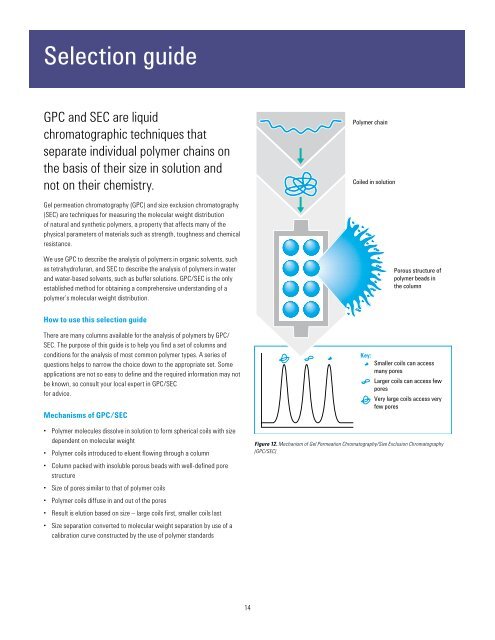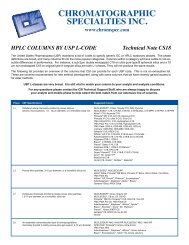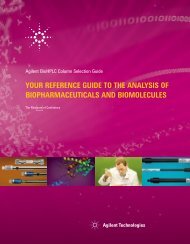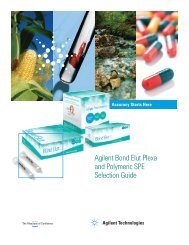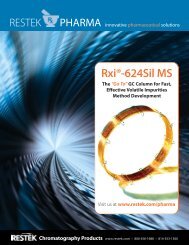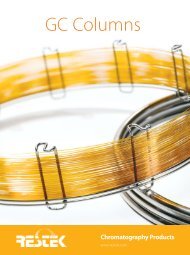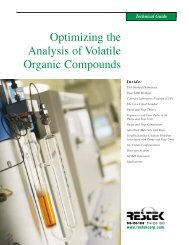Create successful ePaper yourself
Turn your PDF publications into a flip-book with our unique Google optimized e-Paper software.
Selection guide<br />
<strong>GPC</strong> <strong>and</strong> <strong>SEC</strong> are liquid<br />
chromatographic techniques that<br />
separate individual polymer chains on<br />
the basis of their size in solution <strong>and</strong><br />
not on their chemistry.<br />
Gel permeation chromatography (<strong>GPC</strong>) <strong>and</strong> size exclusion chromatography<br />
(<strong>SEC</strong>) are techniques for measuring the molecular weight distribution<br />
of natural <strong>and</strong> synthetic polymers, a property that affects many of the<br />
physical parameters of materials such as strength, toughness <strong>and</strong> chemical<br />
resistance.<br />
We use <strong>GPC</strong> to describe the analysis of polymers in organic solvents, such<br />
as tetrahydrofuran, <strong>and</strong> <strong>SEC</strong> to describe the analysis of polymers in water<br />
<strong>and</strong> water-based solvents, such as buffer solutions. <strong>GPC</strong>/<strong>SEC</strong> is the only<br />
established method for obtaining a comprehensive underst<strong>and</strong>ing of a<br />
polymer’s molecular weight distribution.<br />
How to use this selection guide<br />
There are many <strong>columns</strong> available for the analysis of polymers by <strong>GPC</strong>/<br />
<strong>SEC</strong>. The purpose of this guide is to help you find a set of <strong>columns</strong> <strong>and</strong><br />
conditions for the analysis of most common polymer types. A series of<br />
questions helps to narrow the choice down to the appropriate set. Some<br />
applications are not so easy to define <strong>and</strong> the required information may not<br />
be known, so consult your local expert in <strong>GPC</strong>/<strong>SEC</strong><br />
for advice.<br />
Mechanisms of <strong>GPC</strong>/<strong>SEC</strong><br />
• Polymer molecules dissolve in solution to form spherical coils with size<br />
dependent on molecular weight<br />
• Polymer coils introduced to eluent flowing through a column<br />
• Column packed with insoluble porous beads with well-defined pore<br />
structure<br />
• Size of pores similar to that of polymer coils<br />
• Polymer coils diffuse in <strong>and</strong> out of the pores<br />
• Result is elution based on size – large coils first, smaller coils last<br />
• Size separation converted to molecular weight separation by use of a<br />
calibration curve constructed by the use of polymer st<strong>and</strong>ards<br />
14<br />
Figure 12. Mechanism of Gel Permeation Chromatography/Size Exclusion Chromatography<br />
(<strong>GPC</strong>/<strong>SEC</strong>)


